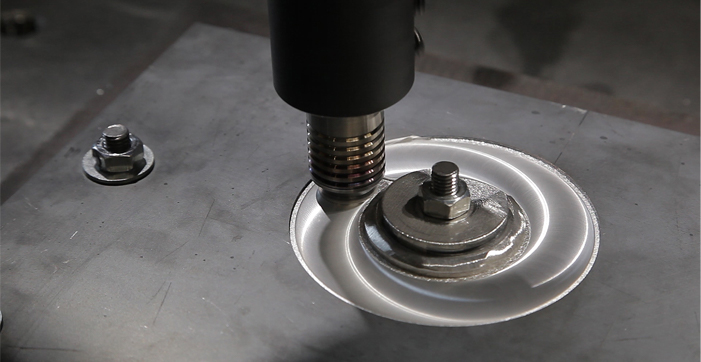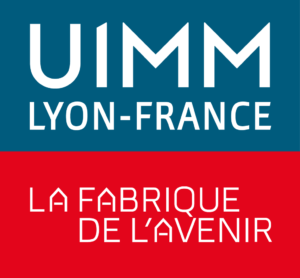Application of FSW in additive manufacturing
FSW in additive manufacturing is an innovation that offers numerous advantages for producers of metal parts. The integration of this welding process into 3D printing is relatively recent and proves its effectiveness.
Originally designed to weld aluminum alloys that are difficult to assemble using traditional methods, Friction Stir Welding (FSW) has rapidly established itself as a revolutionary solution for various industrial sectors…
What distinguishes this welding process from others is the absence of fusion. The result is high weld quality, minimal distortion and improved mechanical properties. As a result, its use has been extended to other applications such as additive manufacturing.
But what is additive manufacturing? How is friction stir welding used in this sector? And what are the most common applications? In this article, TRA-C industrie tells you more about the principles and benefits of FSW for 3D printing!
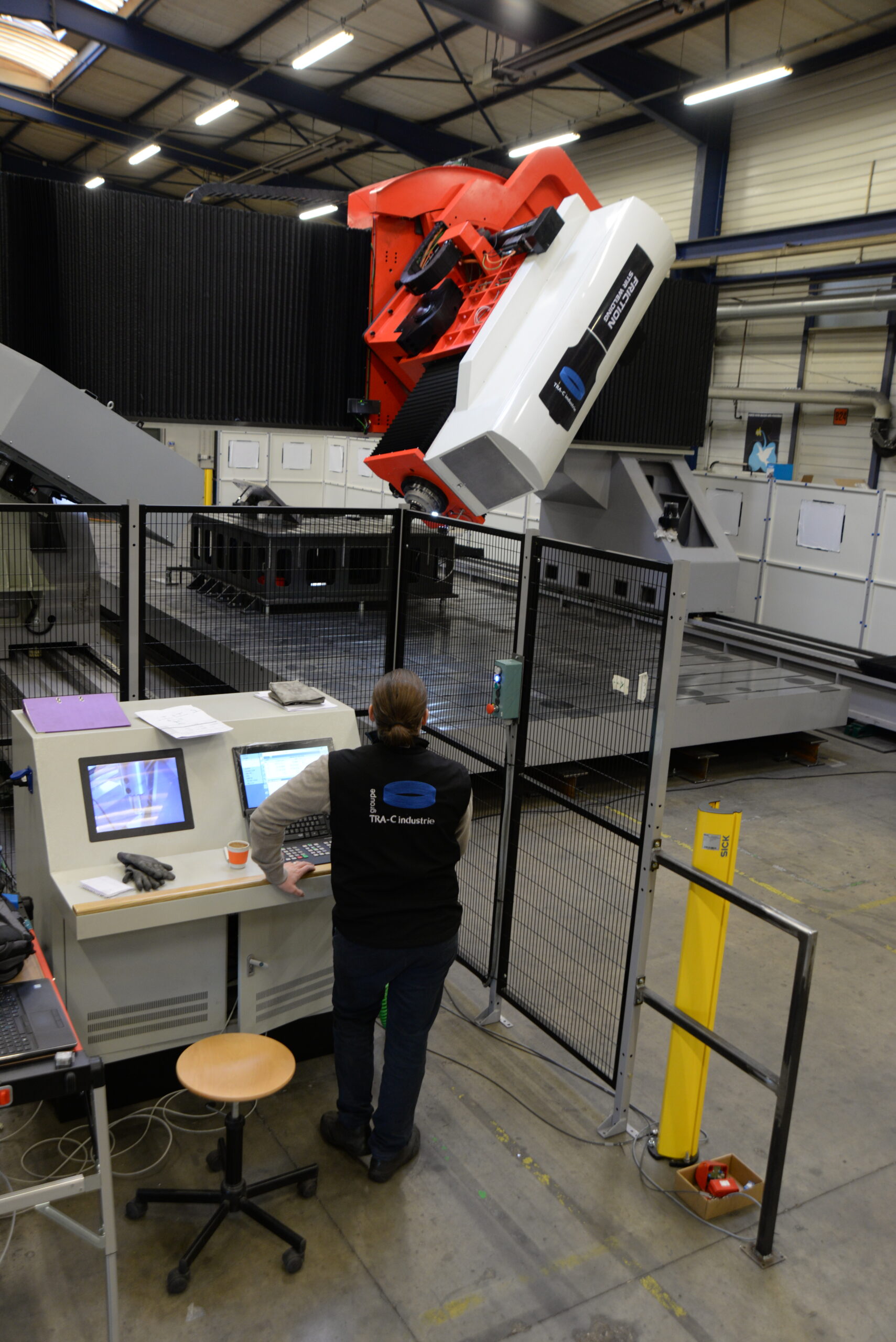
What is additive manufacturing?
Additive manufacturing, also known as 3D printing, is a production process that creates objects by superimposing successive layers of material. These are generally plastics, metals and ceramics, in powder, wire or liquid form.
A computer-aided design tool is used to design the object. A 3D printer then receives the information to deposit or solidify the material layer by layer, until the final object is obtained!
The applications of additive manufacturing are vast, ranging from the production of prototypes to the creation of printed parts for the aerospace, automotive and medical industries. This technology is revolutionizing the way products are designed and manufactured.
One of the main advantages of 3D manufacturing is its ability to customize products according to users’ specific needs. It enables customized objects to be created quickly and cost-effectively, while reducing waste…
Operating principle of friction stir welding
Friction Stir Welding is a solid-state welding process. It uses a non-consumable rotating tip placed between two parts to be joined. The rotation and friction generated by the tool heat the material below its melting point, allowing it to soften.
The rotating tool mixes the materials of the two parts along the weld line, creating a solid welded joint without fusion. This process reduces the typical defects associated with traditional welding processes, such as cracks and porosity…
The pressure exerted by the tool on the material causes local plasticity, enabling the two parts to fuse together in solid form. This method ensures a homogeneous weld with improved mechanical properties compared to conventional techniques.
FSW is particularly suitable for aluminum alloys and other materials that are difficult to weld. This makes it an effective solution for creating strong, durable, environmentally-friendly and economical assemblies in demanding industrial applications!
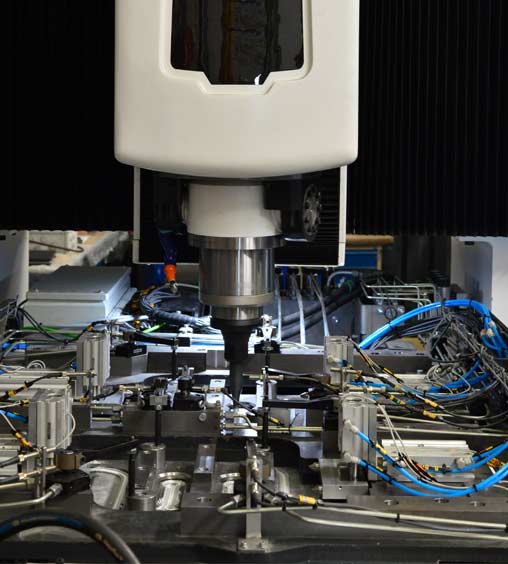
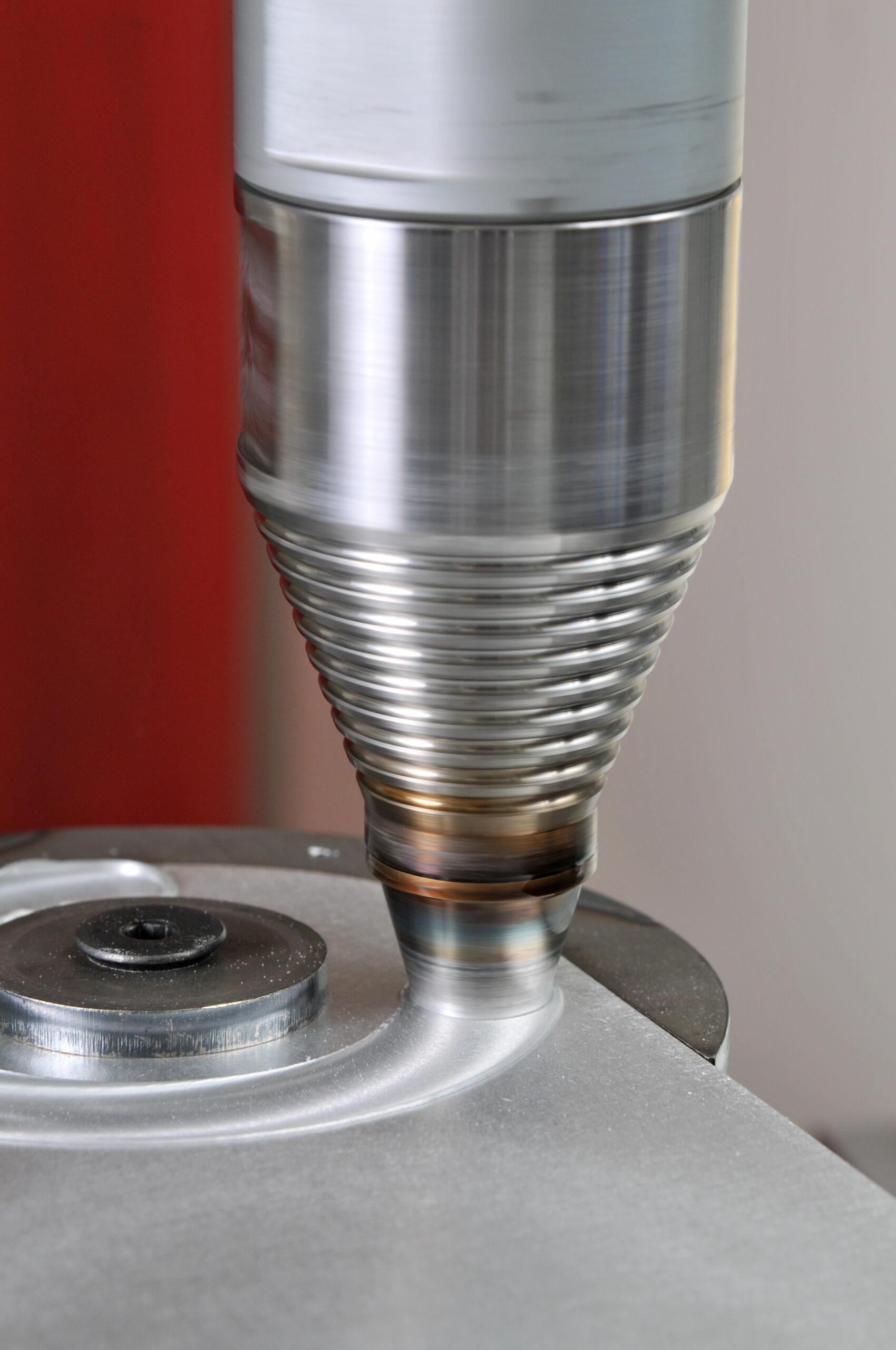
Integration of FSW in additive manufacturing
FSW in additive manufacturing is used to assemble several metal parts. It can be used to weld large sections or modules that cannot be printed in a single operation due to the limitations in size of 3D printers.
FSW is also used to weld successive layers of metal directly during the additive manufacturing process. It thus consolidates junction points or sensitive transition zones between different sections of a 3D printed part…
Friction stir welding is also useful for repairing or modifying manufactured parts by adding material to damaged or worn areas. It is therefore ideal for adjusting or reinforcing existing structures.
Finally, this technique is useful for hybrid additive manufacturing processes. It is used after the printing stage to integrate metal components into polymer-printed structures. It can be used to finalize the assembly of complex components!
The advantages of FSW in 3D printing
Integrating FSW in additive manufacturing offers several significant advantages. The main advantages of friction stir welding in 3D printing include:
- Improved weld quality: first and foremost, FSW enables the creation of joints free of cracks and porosity. These are common defects in traditional fusion welding processes;
- Reduced thermal distortion: in the absence of melting, FSW minimizes heat distortion. As a result, printed parts are more dimensionally stable;
- Compatibility with hard-to-weld materials: FSW also makes it possible to join complex alloys. Aluminum and titanium are difficult to weld using conventional methods;
- Improved mechanical strength: FSW welds are also more robust and durable. They increase the resistance of parts to mechanical loads;
- Energy savings: FSW consumes less energy than fusion welding processes. This helps reduce production costs and carbon footprints;
- Flexibility of use: FSW can finally be used to assemble parts with complex shapes, adapted to the specific needs of additive manufacturing.
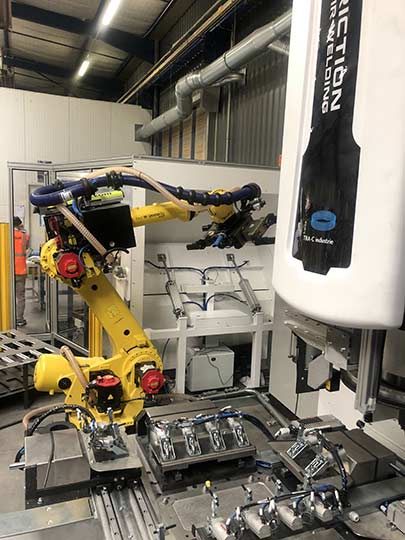
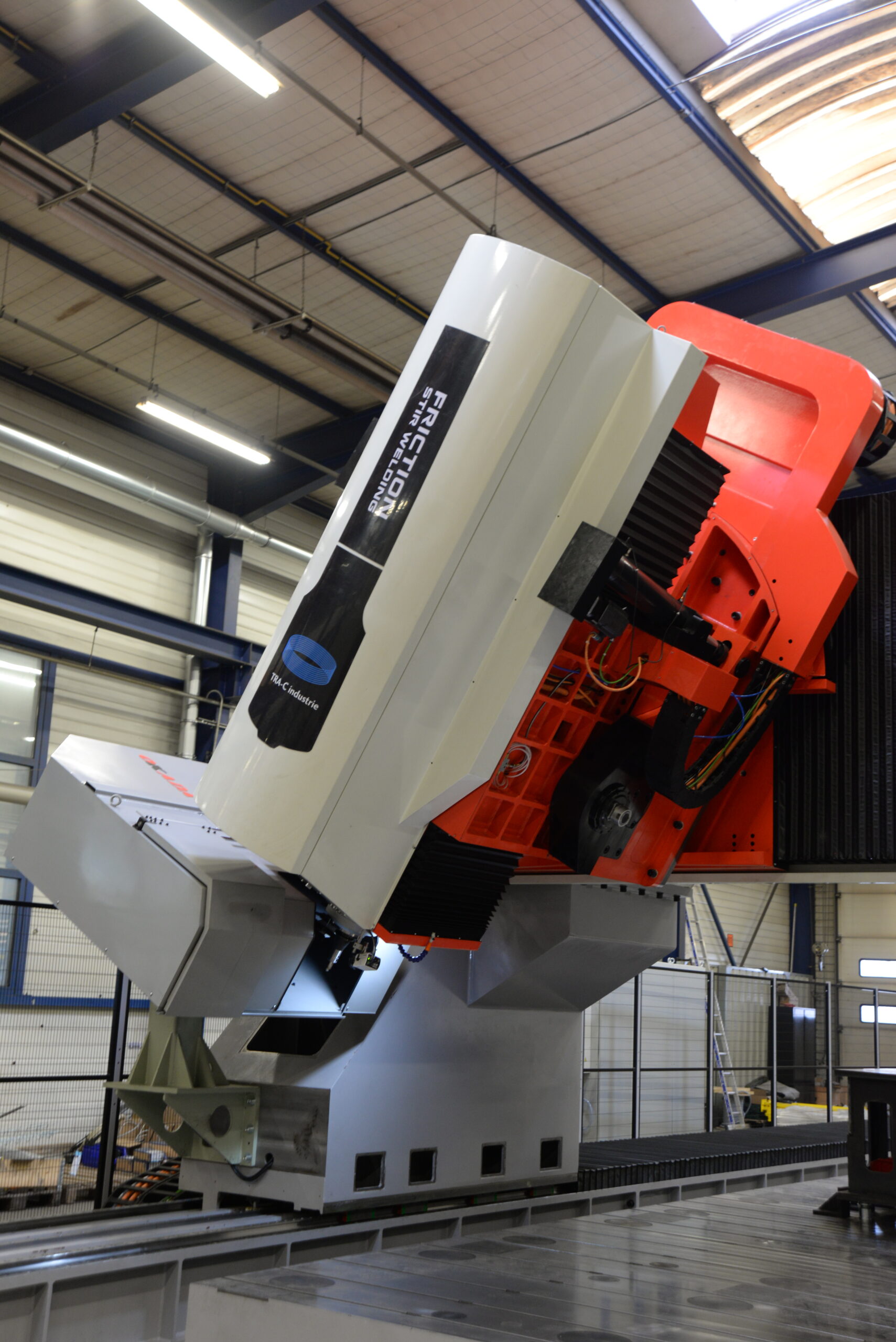
Concrete applications of FSW in additive manufacturing
Thanks to its advantages, many industrial sectors have taken advantage of FSW in additive manufacturing. Here are just a few of the current applications of this innovative process:
- Aerospace parts manufacturing: first and foremost, this technology enables the creation of lightweight, high-strength components. But it can also be used to repair damaged or sensitive parts;
- Automotive parts production: similarly, it is used to manufacture complex parts and repair critical components in the automotive and e-mobility sectors;
- Reinforcing industrial structures: in the construction industry, FSW is also used to reinforce or repair existing metal structures. This extends their service life and improves their performance;
- Tool and mold making: coupled with 3D printing, FSW enables the production of durable molds and tools. It therefore offers customized, durable manufacturing solutions;
- Prototyping and mock-ups: in additive manufacturing, FSW finally enables large-scale prototyping. This facilitates the development and testing of new products.
FSW-derived technology for 3D printing
Because of the advantages of friction stir welding, US company Aeroprobe has developed a technology derived from FSW in additive manufacturing. Known as MELD, this solid-state 3D printing process produces parts without fusion.
This new technology combines rotational friction and high pressure of a metal bar on a support. Instead of the rotating tip (pin) used in FSW, this solid bar is used as filler metal, deposited by a robotic arm…
This metal friction stir additive manufacturing process adds metal layers in a paste-like state very quickly, with virtually no waste of raw material. It can be used to produce blanks, to carry out hardfacing, or to add new functions to an existing part.
The majority of current metal 3D printing technologies are based on the use of lasers, electron beams, sintering, binder jetting or weld bead deposition. MELD, on the other hand, is completely free of direct thermal input.

TRA-C industrie, expert in FSW in additive manufacturing
As an innovative technology, friction stir welding is now used in many sectors. Its efficiency has prompted manufacturers to develop specific applications for FSW in additive manufacturing.
But the applications of friction stir welding don’t stop at 3D printing. It can also be used to assemble parts with large dimensions, weld objects with complex configurations, and produce welds that withstand extreme stresses.
Would you like to benefit from the advantages of FSW for your industrial needs? TRA-C industrie can support you every step of the way, whatever your objectives: design in our engineering office, project management, assembly of your parts, etc.
But also integration of special machines, maintenance of your equipment, automation of your production lines, training of your operators. Whatever your sector: aerospace, rail, automotive, energy, defense, shipbuilding…


